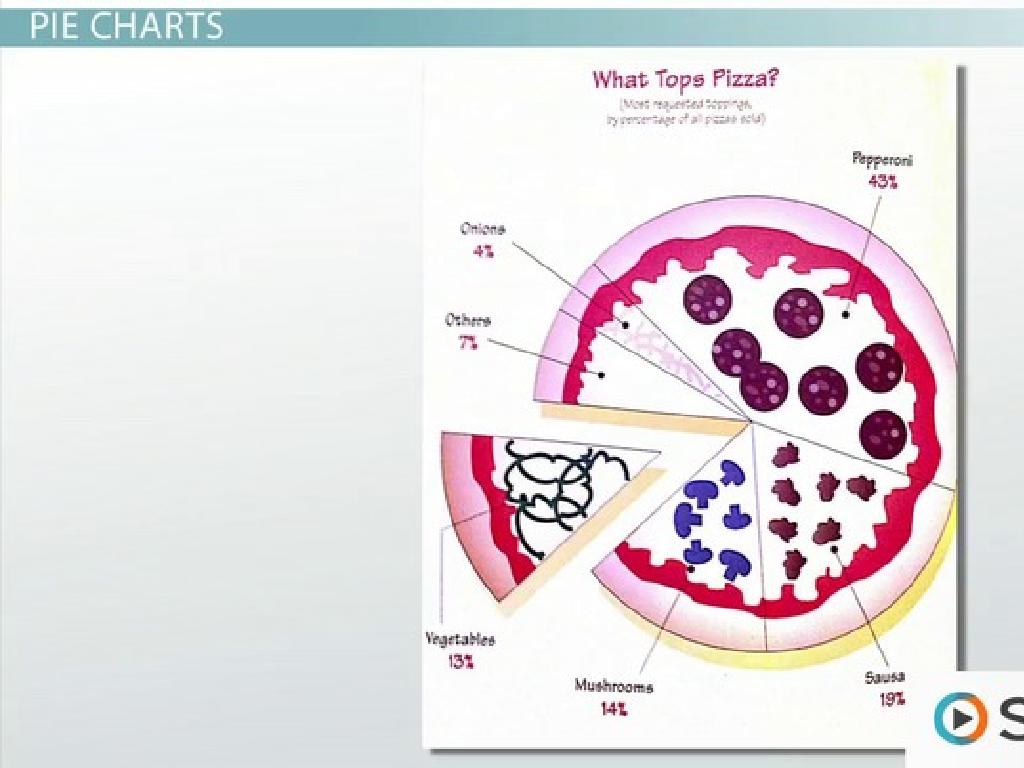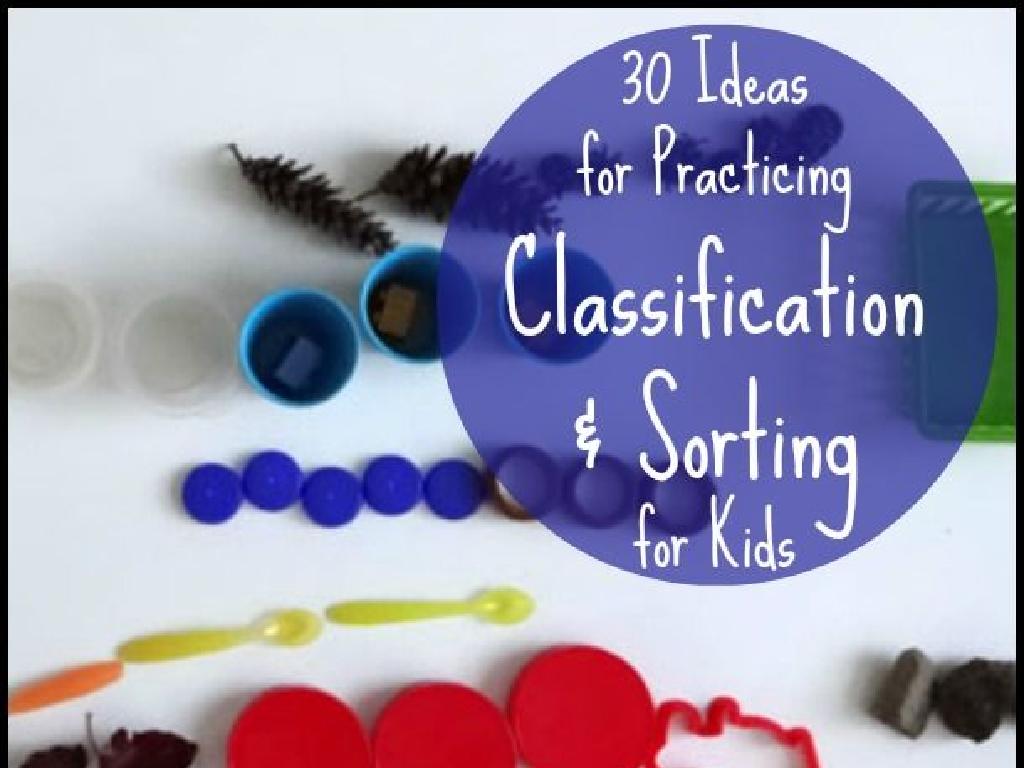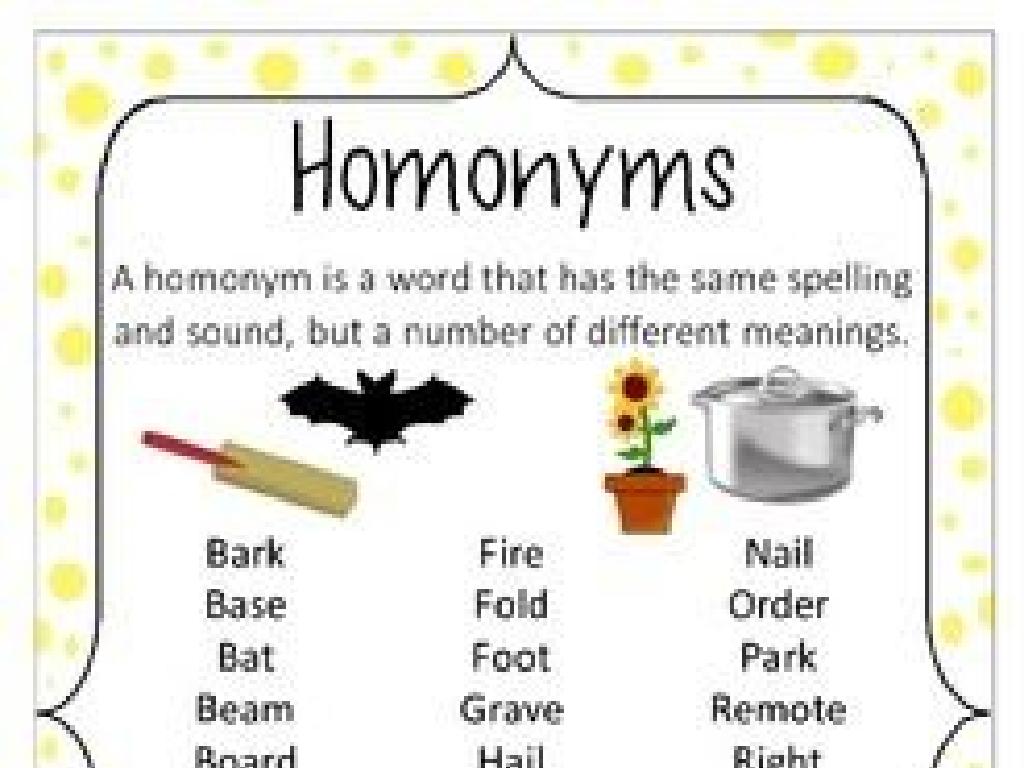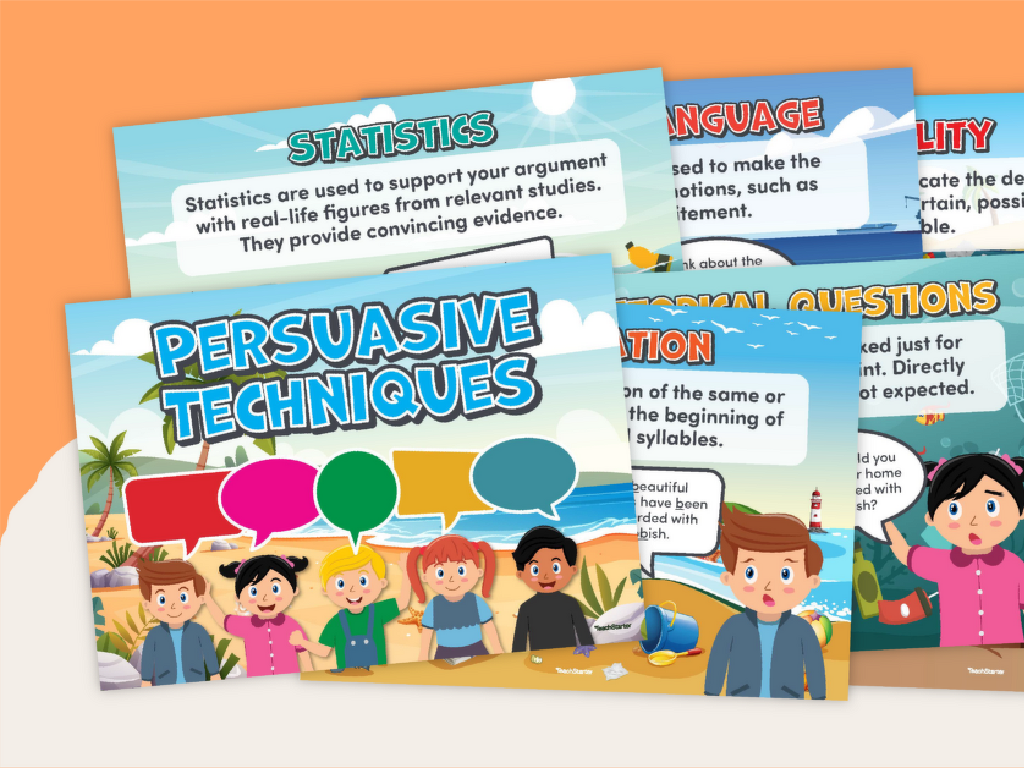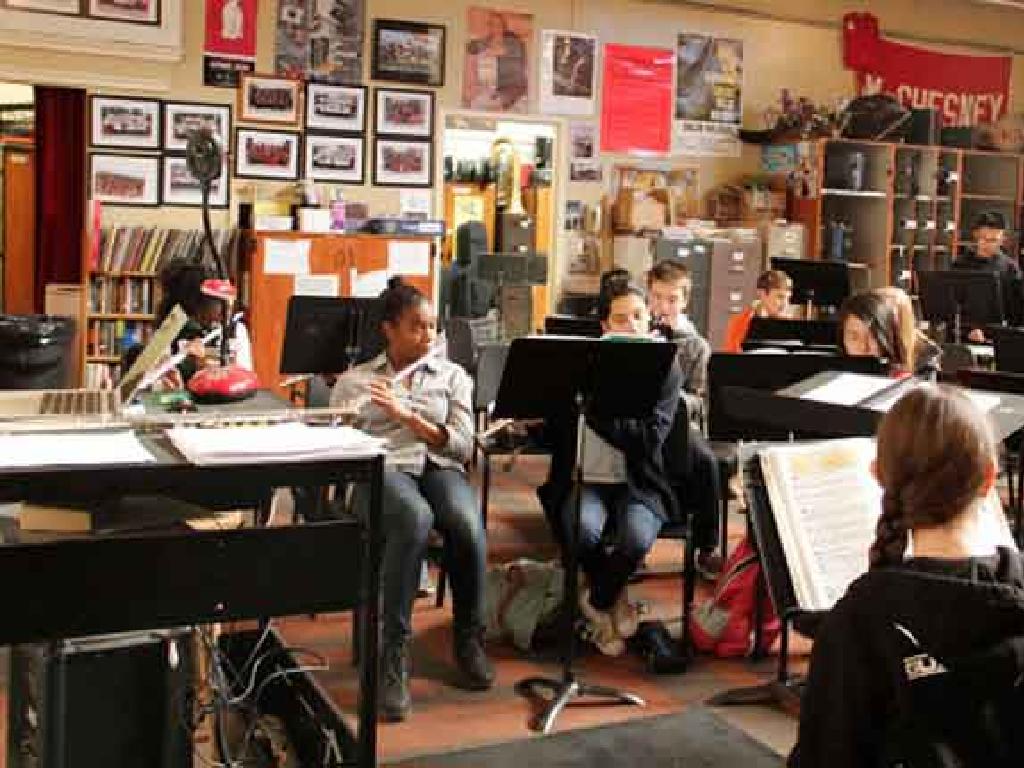Choose The Singular Or Plural Noun That Matches The Picture
Subject: Language arts
Grade: First grade
Topic: Nouns
Please LOG IN to download the presentation. Access is available to registered users only.
View More Content
Welcome to Nouns!
– Greetings First Graders!
– Today’s topic: What are nouns?
– Nouns name people, places, things
– Examples: ‘teacher’ (person), ‘school’ (place), ‘book’ (thing)
– Nouns can also name ideas
– ‘Freedom’ is an idea and also a noun
|
Begin the class with a warm welcome to engage the students. Introduce the concept of nouns in a simple and relatable way. Explain that nouns are the words we use to name everything around us. Use tangible examples like ‘teacher’, ‘school’, and ‘book’ to illustrate nouns that name people, places, and things, respectively. Also, introduce abstract nouns like ‘freedom’ to show that nouns can name ideas that we cannot touch but can think or feel. Encourage the students to look around the classroom and name various objects they see as a practical exercise to identify nouns.
Singular and Plural Nouns
– Singular nouns: only one
– Like one apple, one dog
– Plural nouns: more than one
– Like two apples, three dogs
– Add ‘s’ or ‘es’ for plurals
– Book becomes books, bus becomes buses
– Let’s practice with pictures!
|
This slide introduces the concept of singular and plural nouns to first graders. Start by explaining that singular nouns refer to just one of something, while plural nouns mean you have more than one. Most nouns become plural by simply adding an ‘s’ or ‘es’ at the end. For example, ‘cat’ becomes ‘cats’ and ‘witch’ becomes ‘witches’. Use pictures to help students visualize and understand the concept. For the activity, show pictures and ask students to decide if the noun is singular or plural and how to spell it. Encourage them to explain why they chose ‘s’ or ‘es’ for making nouns plural. This interactive approach will help solidify their understanding of the concept.
Matching Game: Singular or Plural Nouns
– Let’s play a matching game!
– Match pictures with singular or plural nouns
– Look at the picture, does it show one object or many?
– Decide if each picture shows one or many
– If there is one item, it’s singular. If there are many, it’s plural
– Have fun learning about nouns!
|
This slide introduces a class activity designed to help first graders understand the concept of singular and plural nouns through a matching game. Show pictures to the class and ask them to decide if the noun that represents the picture should be singular (one item) or plural (more than one item). For example, a picture of a single cat would match with ‘cat’ (singular), while a picture of several cats would match with ‘cats’ (plural). This interactive game will help students visually distinguish between singular and plural nouns in a fun and engaging way. Prepare a set of pictures beforehand and ensure that there is a mix of easily identifiable singular and plural items to cater to all learning levels in the class.
Singular Nouns: One of a Kind!
– Singular means one
– Example: One cat
– ‘Here is a cat. It is one cat, so it is singular.’
– Example: One tree
– ‘Look at this tree. There’s only one, so it’s singular too.’
– Example: One book
– ‘What about this book? Yes, it’s singular!’
|
This slide introduces the concept of singular nouns to first graders. Singular nouns refer to one single item or entity. Use pictures to illustrate each example. Show a picture of a single cat to represent ‘one cat’ and explain that because there is only one, it is called singular. Do the same for a tree and a book. Encourage students to think of other singular objects in the classroom or at home. The goal is to help students recognize that when they are talking about one single thing, they use a singular noun. This will set the foundation for understanding plural nouns as a contrast.
Matching Plural Nouns with Pictures
– ‘Cats’ shows more than one cat
– When you see several cats, we say ‘cats’ instead of ‘cat’.
– ‘Trees’ means a group, not just one
– One tree is ‘tree’, but more together are called ‘trees’.
– ‘Books’ in a stack implies many
– A single book is ‘book’, but a pile is ‘books’.
– Plural nouns mean more than one
|
This slide is aimed at helping first graders understand the concept of plural nouns through visual examples. Show pictures of multiple cats, a group of trees, and a stack of books to illustrate the idea that plural nouns are used when there is more than one of something. Emphasize the ‘s’ at the end of each word to indicate the plural form. Encourage students to come up with their own examples of singular and plural nouns, and use pictures to reinforce the concept. This interactive approach will help them grasp the difference between singular and plural nouns in a fun and engaging way.
Practice Time: Singular and Plural Nouns
– Practice with worksheets
– Circle singular nouns
– If there’s one item, circle it
– Underline plural nouns
– If there’s more than one, underline
– Share answers with class
|
This slide is designed for a hands-on activity to reinforce the concept of singular and plural nouns. Provide worksheets with pictures and words, and instruct students to identify and circle singular nouns (one item) and underline plural nouns (more than one item). This activity will help them distinguish between singular and plural forms in a visual and interactive way. After completing the worksheets, encourage students to share their answers with the class to foster a collaborative learning environment. As they share, correct any misconceptions and praise correct identifications to build confidence.
Activity Time: Noun Hunt!
– Search for objects in class
– Singular or plural? Decide
– Is it one item or more?
– Show your noun cards
– Use your cards to display your answer
– Have fun with nouns!
|
This interactive activity is designed to help first graders understand and identify singular and plural nouns through a fun classroom hunt. Provide each student with two cards, one labeled ‘singular’ and the other ‘plural.’ As they find objects around the classroom, they must decide if the object is singular (one) or plural (more than one) and hold up the corresponding card. For example, if a student finds a single book, they hold up the ‘singular’ card, but if they find a group of pencils, they hold up the ‘plural’ card. This activity encourages movement, collaboration, and practical application of the concept of singular and plural nouns. Teachers should prepare a list of objects beforehand to ensure a smooth activity flow and have additional noun cards ready in case some get lost or damaged during the activity.
Noun Masters: Singular and Plural
– Singular nouns mean just one
– Plural nouns mean more than one
– You’re now noun experts!
– Keep practicing with pictures
– Find pictures in books and decide if the nouns are singular or plural
|
Congratulations to the class for mastering the concept of singular and plural nouns. Reinforce the idea that singular nouns refer to a single item, while plural nouns are used when there is more than one. Encourage the students to continue practicing by identifying nouns in their favorite books or in the world around them and determining whether they are singular or plural. This will help solidify their understanding and application of the concept in everyday situations. Celebrate their achievement in becoming ‘noun experts’ and motivate them to keep looking for opportunities to practice.

